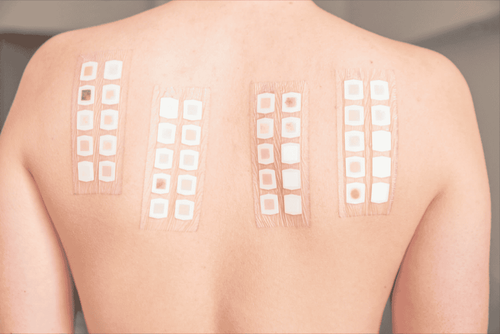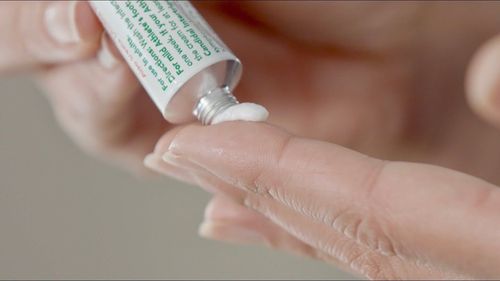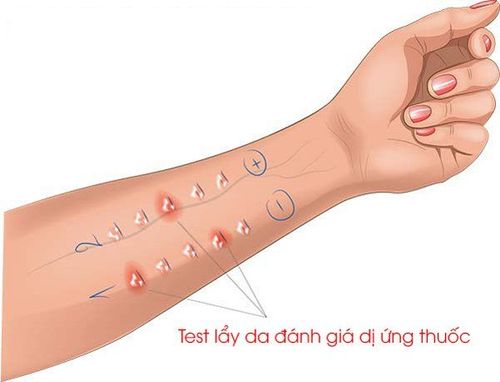This is an automatically translated article.
The article was professionally consulted with Master, Doctor Dang Huy Toan - Department of Pediatrics - Neonatology - Vinmec Nha Trang International General Hospital.Skin testing is a basic technique that helps determine the body's response to allergens to detect allergic reactions. Currently, there are a number of skin tests commonly used to evaluate allergies such as prick test, endodermal test and pressure test.
1. Skin prick test
Put a drop of a solution of the drug or allergen with appropriate concentration on the skin surface, usually on the anterior inner forearm, possibly on the back. Instill a drop of 0.9% NaCl solution 3-4 cm away as a negative control. Instill a positive control histamine solution (concentration of 0.1 mg/mL for histamine base, 0.275 mg/mL for histamine phosphate or 1 mg/mL for histamine dihydrochloride). Use a needle to prick the drops of allergen, yin and yang controls (separate needles are used for each drop). After 15-20 minutes read and evaluate the results. Positive when papule diameter is ≥ 3 mm compared with negative control. Before performing the skin prick test, it is necessary to prepare a full range of anaphylaxis emergency equipment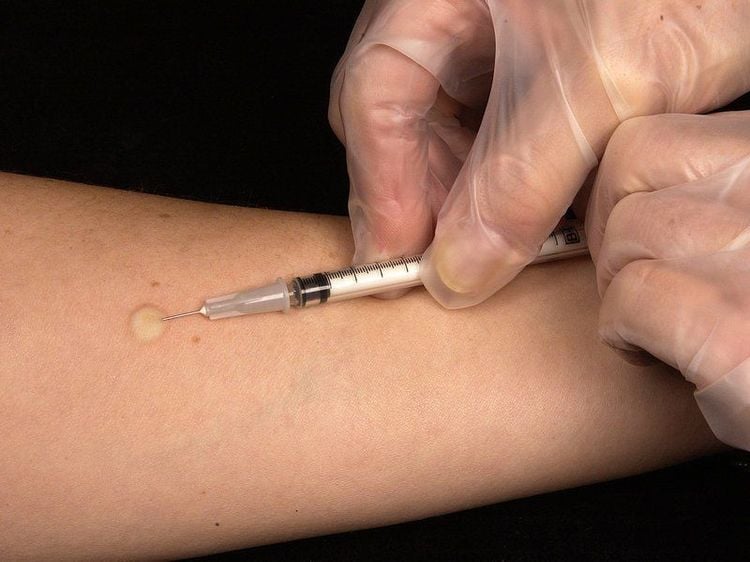
Kĩ thuật test da giúp phát hiện dị ứng thuốc
2. Endodermal test
Intradermal testing is indicated when the skin prick test is negative. How to perform intradermal test is as follows:Drug or allergen is diluted to a concentration of 1/10 or 1/100 of the concentration of skin prick test, note if there is a history of anaphylaxis the concentration can be diluted than. Using syringe 26, 30, take about 0.02-0.05 mL of allergen solution and inject it into a papule with a size of 2-3 mm on the anterior forearm skin. Using histamine as a positive control, 0.9% NaCl as a negative control. Read the results after 15-20 minutes. Test positive when papule diameter is 5mm compared with negative control Note when performing endodermal test: Endodermal test has a higher risk of causing anaphylaxis than skin prick test, so it must be performed in specialized and controlled hospitals. anaphylactic shock emergency.
3. Pressure test
How to perform the pressure test is as follows:Wipe the area of skin to be tested with ester to dry. Place gauze sheets of size 1×1cm impregnated with the solution to be tested, cover the gauze with plastic sheets of size 3×3cm and then cover. After 24 - 48 and 72 hours, read the results. Evaluate the results as follows: Mildly positive reaction: Erythema and pruritus at the test site. Moderately positive reaction: Erythema, vesicles and edema. Strong positive reaction: Blisters and ulcers at the test site.
4. Some notes when doing skin test
Skin testing should not be performed when the patient is suffering from acute allergic disease (rhinitis, urticaria, severe eczema, Quincke's edema, erythema, erythema multiforme...), pregnant women, infants , children younger than 6 months old, uncontrolled asthma, patient has lesions on the skin intended to be tested, is using antihistamines, corticosteroids,... Some drugs affect accuracy Skin prick tests include antihistamines, systemic corticosteroids, and tricyclic antidepressants. Therefore, antihistamines should be stopped 48 to 72 hours before the test, systemic corticosteroids 3-5 days before the test, and tricyclic antidepressants for 3 to 10 days. The age of the patient, the location of the test, and the technique used can affect the results of the skin test.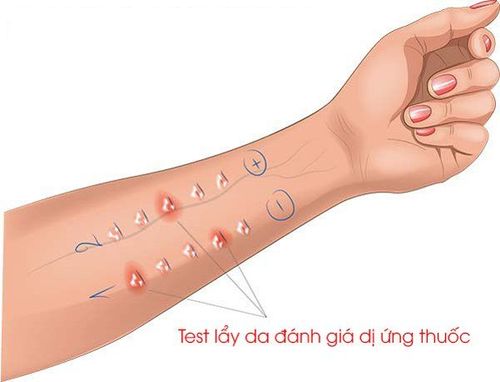
Khi thực hiện test da cần lưu ý những vấn đề gì?
Please dial HOTLINE for more information or register for an appointment HERE. Download MyVinmec app to make appointments faster and to manage your bookings easily.




